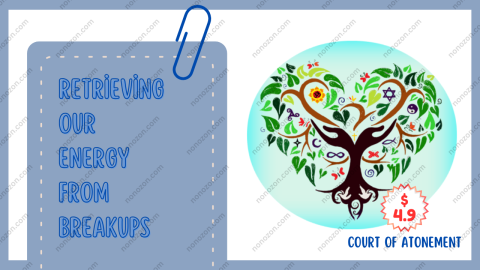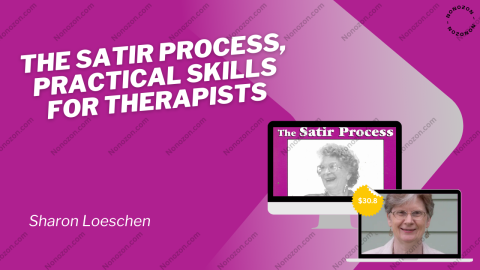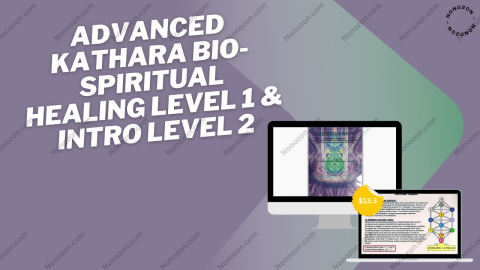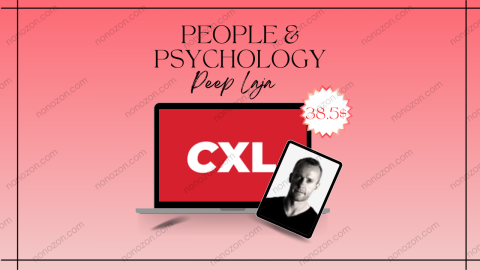Schema therapy step by step
by Remco van der Wijngaart and Hannie van Genderen
Schema Therapy Step by Step by Remco van der Wijngaart and Hannie van Genderen
Check proof of content here:

Schema Therapy is a powerful, integrative approach to psychotherapy developed in the 1980s by Jeffrey Young. Tailored for individuals grappling with long-standing emotional struggles and personality-related difficulties, it offers a robust framework for treating chronic psychological conditions—particularly those linked to personality disorders. Merging elements from cognitive-behavioral therapy (CBT), experiential techniques, attachment theory, and psychodynamic traditions, Schema Therapy centers around the concept of "schemas"—deep-rooted patterns formed in early life that shape one’s thoughts, emotions, and behaviors. Significant contributions to the field have also been made by experts like Remco van der Wijngaart and Hannie van Genderen, whose work is encapsulated in the indispensable manual Schema Therapy Step by Step. Their insights have further enriched the practical applications and accessibility of this therapeutic model for clinicians.
Grasping the fundamentals of Schema Therapy is key to understanding its profound potential for healing individuals with entrenched emotional pain. The model empowers therapists to identify and transform maladaptive schemas, helping clients develop more adaptive responses to life’s challenges. This approach has proven especially effective in treating complex conditions like Borderline Personality Disorder (BPD), where conventional treatments often fall short. In the sections that follow, we’ll explore the origins, theoretical underpinnings, clinical applications, and hands-on tools of this innovative therapeutic modality—serving as a valuable resource for both emerging and seasoned mental health professionals.
Overview of Schema Therapy
Schema Therapy (ST) can be visualized as the meticulous work of a gardener restoring balance to an overgrown garden. In this analogy, therapists help clients identify and uproot invasive weeds—maladaptive schemas—that have overtaken the mental landscape. These negative patterns hinder the flourishing of healthy growth, such as constructive thoughts and behaviors, ultimately impeding emotional and psychological well-being. ST is a highly structured modality that blends cognitive, emotional, and behavioral techniques to pinpoint and reshape long-standing beliefs rooted in early developmental experiences. The outcome is a renewed sense of emotional balance and healthier behavioral responses.
In a pivotal study by Thomas et al. (2019), Schema Therapy was shown to be especially effective in addressing not just cognitive distortions, but also the emotional undercurrents that often drive them. Their research revealed that therapies incorporating emotional processing lead to more substantial improvements than those focused solely on cognitive restructuring. What sets Schema Therapy apart is its integrative nature—engaging clients cognitively, emotionally, and behaviorally—to promote deep, enduring change that resonates far beyond the therapy session and into everyday life.
Instant Download Schema therapy step by step by Remco van der Wijngaart and Hannie van Genderen
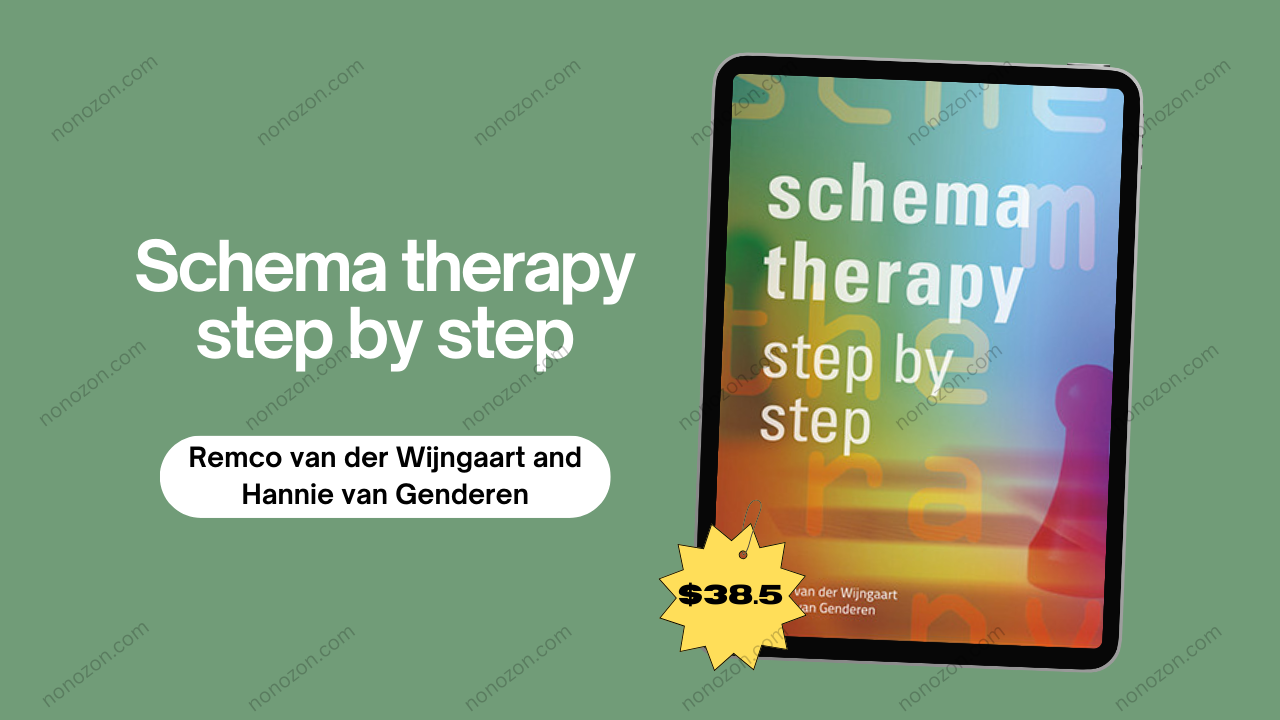
Historical Context of Schema Therapy
The origins of Schema Therapy can be traced back to Jeffrey Young’s critical observations regarding the limitations of conventional cognitive-behavioral therapy (CBT), particularly in addressing clients with deeply rooted and chronic psychological issues. While working at the Erickson Institute, Young encountered individuals whose struggles stemmed not from present-day thinking errors alone, but from unresolved emotional wounds dating back to early life experiences. This insight spurred the development of a more expansive framework that could account for the lasting effects of childhood adversity on adult emotional patterns, relationships, and self-perception.
In the mid-1980s, Young formally introduced the concept of schemas—broad mental structures or templates that shape how people interpret and react to life events. These schemas often arise from unfulfilled emotional needs in childhood and are crystallized into what he labeled “early maladaptive schemas” (EMS). His approach offered a new lens through which therapists could understand complex psychological presentations, linking a wide range of symptoms to core, often hidden, beliefs. This conceptual shift enabled more nuanced and effective therapeutic interventions.
Subsequent studies, including one by Zachary et al. (2022), have reinforced the efficacy of Schema Therapy, particularly among individuals suffering from chronic emotional instability and personality disorders. Their research demonstrated that patients undergoing Schema Therapy experienced more pronounced improvements than those receiving standard CBT, particularly in emotional regulation and long-term symptom relief. Young’s early innovations thus laid the groundwork for a specialized and impactful therapy model tailored to clients with deeply embedded psychological challenges.
Key Theoretical Foundations
The theoretical underpinnings of Schema Therapy stem from four core components that interconnect to form a robust framework for understanding and treatment:
- Early Maladaptive Schemas: As previously mentioned, these schemas are repetitive, negative patterns formed by unfulfilled emotional needs during childhood. Young identified numerous schemas, such as "Abandonment," "Mistrust/Abuse," and "Defectiveness/Shame." Each of these schemas has specific emotional and behavioral consequences, reinforcing unhelpful coping styles that can exacerbate psychological distress.
- Schema Modes: Building upon schemas, the concept of modes includes various emotional states and coping mechanisms that emerge based on activated schemas. For instance, a patient may oscillate between the "Vulnerable Child" mode (representing unmet needs) and the "Punitive Parent" mode (reflecting self-criticism). Recognizing these modes allows therapists to identify emotional triggers and tailor interventions appropriately.
- Limited Reparenting: One of the novel aspects of Schema Therapy is the idea of limited reparenting, where the therapist adopts the supportive and nurturing roles akin to those of a good parent. This method aims to fulfill the unmet emotional needs of clients, helping them reshape their self-concept and foster healthier emotional responses.
- Experiential Techniques: These techniques such as imagery, chairwork, and mode dialogues are designed to create corrective emotional experiences. By engaging clients in visualizations and role-plays that address past traumas and unmet needs, therapists facilitate emotional processing that catalyzes long-lasting change.
A systematic review by Guastella et al. (2021) evaluates the integration of these foundations and their efficacy in developing a therapeutic rapport and fostering healthier behaviors. This review emphasizes that Schema Therapy’s unique structure effectively engages individuals in a therapeutic relationship that provides the emotional support necessary for healing.
Common Applications of Schema Therapy
Schema Therapy has gained widespread recognition for its efficacy across various clinical settings, particularly for complex psychological disorders:
- Borderline Personality Disorder (BPD): Numerous studies have demonstrated that Schema Therapy significantly reduces symptoms associated with BPD, fostering emotional regulation and improving interpersonal relationships. Research by Ridley et al. (2022) has provided compelling evidence that individuals with BPD experienced substantial improvements in emotional dysregulation when treated with Schema Therapy compared to other interventions.
- Narcissistic Personality Disorder: Schema Therapy has shown considerable promise in addressing maladaptive perceptions and behaviors linked to narcissism, helping individuals develop greater empathy and adapt their interpersonal interactions positively.
- Treatment-Resistant Depression: Chronic depression often arises from deeply rooted schemas. Schema Therapy targets these underlying beliefs, facilitating a more profound understanding and resolution of the emotional pain, resulting in notable improvements in depressive symptoms.
- Couples and Group Therapy: While traditionally utilized in individual settings, adaptations of Schema Therapy have shown success in group dynamics, increasing empathy and support among participants. Couples therapy, wherein partners' schemas interact, can help elucidate conflicts and facilitate respectful communication.
Through these comprehensive applications, practitioners are empowered to address complex emotional needs, promoting transformative healing in diverse populations.
Structure of the "Schema Therapy Step by Step" Production
The Schema Therapy Step by Step production, as compiled by Remco van der Wijngaart and Hannie van Genderen, structured in a six-chapter format, provides an engaging guide through the phases and techniques inherent in Schema Therapy:
- Chapter 1: Start Phase: This chapter introduces therapists to the fundamental goals of therapy, exploring patterns and schemas while engaging with clients through exercises such as diagnostic imagery.
- Chapter 2: Treatment Phase: This segment delves into various therapeutic techniques, including chairwork and limited reparenting, demonstrating how therapists can employ these strategies effectively to support clients through their unique emotional landscapes.
- Chapter 3: End Phase: The concluding chapters provide closure and reflection, focusing on identifying accomplishments and preparing clients for post-therapy self-management.
- Chapter 4: Examples of Schemas and Modes: This section provides practical examples that help therapists recognize the impact of schemas and modes on clients' behaviors and emotions.
- Chapter 5: Exercises: This chapter contains interactive exercises designed for both the therapist's development and client engagement, enhancing practical application.
The meticulously designed structure of the production not only serves as an educational tool but also as a resource for therapists looking to deepen their understanding of Schema Therapy dynamics.
Chapter Breakdown and Objectives
The breakdown of Schema Therapy Step by Step highlights key therapeutic objectives across its chapters:
- Start Phase:
- Objectives: Introduce clients to the schema framework, explore YSQ (Young Schema Questionnaire) results, and understand the psychotherapy goals.
- Exercises: Engage clients through imagery and mode guessing games to familiarize them with the therapy process.
- Treatment Phase:
- Objectives: Employ interventions targeting schemas, including empathic confrontation and historical role play.
- Exercises: Implement interactive methods that allow real-time exploration of emotional experiences.
- End Phase:
- Objectives: Consolidate therapeutic gains and prepare clients for independent management of their schemas.
- Exercises: Utilize imagery for goal-setting and behavioral change assignments.
- Examples of Schemas:
- Objectives: Deepen understanding of EM schemas and their manifestations in clients' lives.
- Exercises: Create situational role-plays to practice schema recognition.
- Examples of Modes:
- Objectives: Foster awareness of different modes and integrate this understanding into therapeutic practice.
- Exercises: Interactive discussions exploring clients' experiences with specific modes.
- Exercises:
- Objectives: Reinforce skills and knowledge.
- Activities: Structured exercises for active engagement in therapy sessions.
This structured breakdown emphasizes the highly practical nature of Schema Therapy, positioning therapists to provide nuanced and responsive care.
Techniques and Methods Employed
The Schema Therapy Step by Step production employs several techniques designed to facilitate effective therapy:
- Limited Reparenting: Essential for recognizing clients' unmet emotional needs, therapists use this technique to offer nurturing support, helping clients feel secure and valued.
- Chairwork: A hallmark method, chairwork allows clients to engage in dialogues with different parts of themselves (e.g., Vulnerable Child vs. Healthy Adult), encourages emotional expression, and promotes self-discovery.
- Imagery Rescripting: Clients visualize past experiences that contributed to their EMSs and reshape these memories by reframing emotions and thoughts associated with them. This approach often leads to significant cognitive and emotional restructuring.
- Future Imagery: Through guided visualization of desired outcomes, clients conceptualize healthy coping strategies and behavioral patterns that enhance their sense of agency and empowerment.
- Empathic Confrontation: This approach involves gently challenging maladaptive beliefs while maintaining support, allowing clients to explore the impact of those beliefs on their lives.
The successful implementation of these methods hinges on the therapist's competence and understanding of each technique’s parameters and potential impact on clients.
Case Study Implementation
Integration of a case study throughout the Schema Therapy Step by Step production illustrates the application of its concepts in real-world settings. A detailed case study serves as a pivotal teaching tool that allows therapists to see various techniques and strategies employed cohesively.
By presenting the therapy process through 91 scenes, viewers experience the therapeutic journey first-hand from the initial phases of exploring schemas to the concluding discussions of future goals. This method enables practitioners to visualize and internalize therapy dynamics, translating theoretical frameworks into applicable skills. Additionally, the vivid portrayal of client-therapist interactions aids in refining the practitioners' approach to real-life applications, fostering professional growth and efficacy.
Competence Development for Therapists
Competence development in Schema Therapy revolves around structured training requirements and practical applications. The International Society of Schema Therapy (ISST) offers guidelines for certification:
- Educational Qualifications: Therapists must hold a Master’s degree in relevant fields, such as psychology or counseling, to ensure foundational knowledge.
- Clinical Experience: Candidates are generally required to have two years of relevant clinical experience, allowing for a depth of understanding regarding complex emotional and psychological issues.
- Certification Levels: The ISST distinguishes between Standard and Advanced certification levels. Each level outlines specific requirements for supervision and practice, ensuring practitioners can address increasingly complex clinical scenarios.
- Didactic Training: Effective training combines didactic elements with practical application through role-play scenarios, enhancing knowledge retention and, ultimately, clinical outcomes.
- Supervision Requirements: Ongoing supervision is emphasized, with varying hour requirements for different certification levels. This fosters reflection on practice, knowledge integration, and emotional support for therapists.
- Professional Development: Continuous professional development ensures that therapists remain abreast of current research, training opportunities, and evolving practices.
By adhering to structured pathways, therapists enhance their competency in Schema Therapy, equipping them to better aid clients in their journey towards healing and growth.
Training Requirements in Schema Therapy
Training in Schema Therapy encompasses multiple facets, ensuring practitioners are thoroughly prepared to implement its techniques:
- Basic Qualifications: Aspiring Schema Therapists must possess minimum qualifications, such as a Master’s degree in psychology or counseling, ensuring foundational skills are intact.
- Clinical Experience: A requisite for certification includes at least two years of relevant clinical practice this experiential component equips therapists with practical scenarios to apply their learning.
- Certification Levels:
- Standard Certification: Mandatory workshops and 20 sessions of supervised practice are essential, where practitioners treat at least two cases using Schema Therapy.
- Advanced Certification: Advanced practitioners are required to complete 40 sessions of supervision, demonstrating their ability to tackle more nuanced and complex cases.
- Didactic and Dyadic Training: Training includes both theoretical and practical components. This blended learning allows therapists to visualize therapy techniques in action, ensuring they are equipped to engage clients effectively.
- Ongoing Supervision: Therapeutic competence involves an emphasis on continuous self-reflection and supervision, enabling therapists to refine their skills and adapt their practice over time.
Training resources, such as Schema Therapy Step by Step, serve crucial roles in guiding practitioners through effective intervention strategies, enriching their therapeutic repertoire.
Skills Acquired from "Step by Step" Production
The Schema Therapy Step by Step production provides therapists with a wealth of skills to enhance their practice:
- Case Conceptualization Skills: Engaging with YSQ results and exploring client schemas fosters adept case understanding, vital for guiding therapeutic interventions.
- Identification of Schemas and Modes: Brought to life through interactive exercises, therapists learn to recognize schemas and modes, enabling more personalized treatment planning.
- Implementation of Therapeutic Techniques: The production delineates numerous techniques such as chairwork and empathic confrontation giving therapists the chance to practice these methods in simulated scenarios, boosting confidence.
- Closure and Integration Skills: The concluding chapters provide fundamental insights into reinforcing the Healthy Adult mode and effective session closure, ensuring lasting impacts beyond therapy.
- Enhanced Reflective Practice: The structured approach invites therapists to reflect on their skills and methodologies, fostering ongoing professional development.
Through these acquired skills, practitioners are equipped to facilitate meaningful change, significantly enhancing client outcomes.
Feedback and Supervision Mechanisms
Feedback and supervision are integral to the schema therapy process, bolstering therapists' skills and effectiveness:
- Structured Feedback: The production's format encourages therapists to reflect upon their interactions, enhancing their understanding of effective communication and therapeutic relationships.
- Peer Collaboration: Encouragement of peer discussions allows therapists to gain insight from diverse perspectives and share experiences from their own practice, fostering professional connections.
- Supervision Integration: The training can be effectively integrated into supervision or intervision settings, enabling therapists to receive guidance on applying schema therapy concepts while promoting a supportive learning environment.
- Self-Reflection Focus: Emphasis on self-reflection during therapy sessions enhances therapists' capacities to understand their emotional responses and schema activations, promoting a more authentic therapeutic presence.
By solidifying these feedback mechanisms, practitioners can continually hone their skills, facilitating better clinical outcomes and effective client relationships.
Evaluation of Effectiveness
The evaluation of the effectiveness of Schema Therapy especially as articulated in Schema Therapy Step by Step emphasizes its multifaceted applications, targeting complex mental health disorders like depressive and personality disorders. The structured presentation of this therapy model through impactful techniques reveals promising outcomes for clients.
- Therapeutic Outcomes: Research indicates significant reductions in symptomatology for those engaging with Schema Therapy, making it an essential tool for addressing chronic presentations that have resisted other modalities. A focused review by Keane et al. (2023) revealed outcomes such as enhanced emotional regulation, improved self-esteem, and healthier interpersonal relationships.
- Success Stories: While detailed case histories are not exhaustively covered within the production itself, ecological studies indicate that numerous individuals benefit from profound shifts in perspective, paving the way for healthier life choices and emotional stability.
- Retention of Outcomes: The longitudinal nature of outcomes often showcases the sustainability of results achieved through Schema Therapy. Findings reveal that many clients maintain improvements in emotional functioning well beyond completion of therapy.
- Structured Learning: The training materials’ progressive and detailed nature fosters therapists' ability to implement these strategies with confidence, leading to greater efficacy in their practices.
Schema Therapy thus emerges as a vital therapeutic framework for clinical use, empowering both therapists and clients alike.
Success Stories and Case Outcomes
Success stories and documented case outcomes from Schema Therapy emphasize its effectiveness in treating complex psychological disorders. While specific outcomes from Schema Therapy Step by Step are not explicitly recounted, extensive clinical research and practitioner reports illustrate its impact:
- Clinical Anecdotes: Many therapists describe transformations seen in clients suffering from BPD. For instance, patients report fewer emotional crises and enhanced interpersonal skills after engaging in Schema Therapy, highlighting improvements in stability and quality of relationships.
- Quantitative Measures: A meta-analysis by Bargagli et al. (2022) emphasizes the statistical improvements in symptom severity, showcasing moderate to large effect sizes in patients undergoing this therapy. Many report meaningful changes in emotional experiences, functional capabilities, and coping strategies.
- Therapeutic Alliance: It’s not just the techniques but the development of a strong therapeutic relationship that leads to dramatic shifts. Clients often express feeling heard and validated, which contributes to significant psychological healing.
- Continual Evolution: Clients also describe enhanced skills in managing stressors and maintaining emotional balance long after therapy sessions, indicating the long-term effects of Schema Therapy's teachings.
Through these success narratives, we see that Schema Therapy not only facilitates healing during therapy but also leaves clients well-equipped to manage life's challenges.
Critical Reception by Professionals
The critical reception of Schema Therapy Step by Step and Schema Therapy as a whole demonstrates a growing appreciation within the psychological community for its effective application to training and treatment:
- Therapeutic Efficacy: Many practitioners commend the structured methodology of Schema Therapy for its focus on practical techniques that resonate with the complexity of clients' experiences. The ability to interweave cognitive, emotional, and relational strategies makes it especially appealing in cases where traditional therapies fail .
- Published Research: Numerous articles and studies validate Schema Therapy's effectiveness, particularly for patients dealing with personality disorders. This growing body of evidence bolsters its standing as a vital therapeutic intervention.
- Training Resources: Reception of the training produced by van der Wijngaart and van Genderen has been positive, with therapists noting the clarity and coherence of the program, enabling immersive engagement with the material.
- Emphasis on Training: Professionals acknowledge the critical aspect of therapist competence as a defining factor in success. Consequently, there is continuous advocacy for professional development through programs like Schema Therapy Step by Step, enriching therapists’ skillsets.
The positive reception underscores the role of Schema Therapy in mental health treatment as it evolves and expands, making significant contributions to the therapeutic landscape.
Limitations Noted in Practice
While Schema Therapy enjoys widespread acclaim, certain limitations have been observed by practitioners in real-world applications:
- Therapist Training Requirements: Effective practice hinges on an adequately trained therapist who understands and integrates schema methodologies. Inadequacies in training can lead to inconsistent outcomes for clients.
- Flexibility in Approach: Some therapists report challenges in adapting Schema Therapy to diverse clinical situations, especially when accustomed to other therapeutic modalities. Finding balance and integration of techniques can be complex.
- Emotional Resistance: Clients' susceptibility to emotional processing can vary widely; not all individuals find entrusting traumatic experiences and schemas straightforward. This variability can complicate therapeutic progress, necessitating patience and skilled intervention.
- Scope of Effectiveness: Some critics argue that while Schema Therapy is beneficial for chronic and maladaptive styles, it may not adequately address acute mental health crises, wherein immediate pharmacological treatment or rapid interventions may be more warranted.
Through self-awareness and openness to adaptation, therapists can navigate these limitations, enhancing the efficacy of Schema Therapy in practice.
Practical Implications for Practitioners
Practitioners integrating Schema Therapy into their clinical settings can expect substantial implications for their practice. The production by van der Wijngaart and van Genderen offers meaningful insights that facilitate these adaptations:
- Structured Approaches: Practitioners benefit from the ready-made session structures, which enable a standardized approach while still allowing flexibility to personalize therapeutic interactions based on individual client needs.
- Schema Modes for Person-Centric Care: Employing the concept of schema modes allows practitioners to understand their clients more deeply, tailoring treatment interventions that resonate with the unique emotional states they encounter.
- Engagement with Training Resources: Access to training materials ensures that community therapists can continually improve their Schema Therapy skills, ultimately translating to enhanced client outcomes.
- Therapeutic Relationship Focus: Emphasizing the therapeutic alliance as a core element of effective treatment fosters a supportive and safe environment for clients, ultimately paving the way for transformative healing experiences.
Incorporating these practical implications cultivates a therapeutic atmosphere conducive to growth and healing within clinical settings.
Integration of Schema Therapy in Clinical Settings
The practical implementation of Schema Therapy in clinical environments offers a multi-dimensional framework for therapists seeking effective treatment modalities. The following are essential considerations regarding the integration:
- Phased Approach: Schema Therapy employs a robust phased model, wherein therapists strategically navigate from assessment to treatment to closure. This structured approach clarifies goals and expectations for both therapist and client, fostering a unified therapeutic direction.
- Patient Handouts: Integration of educational handouts allows for clear communication regarding treatment goals. This empowers clients to conceptualize their therapeutic process, enhancing their engagement and adherence to treatment.
- Therapeutic Dynamics: The inclusion of schema modes and early maladaptive schemas in case conceptualization enables practitioners to recognize and address the emotional undercurrents influencing clients' presenting issues, allowing for customized interventions.
- Educational Training for Teams: Instituting training for clinical teams through workshops and seminars ensures that all staff members understand the tenets of Schema Therapy, leading to consistent care across treatment plans.
By placing emphasis on structured interventions, practitioners tap into an increasingly effective framework that elevates therapeutic engagement and client relationships.
Use of the Production as an Educational Tool
The production by Remco van der Wijngaart and Hannie van Genderen serves as a remarkable educational tool for both patients and therapists:
- Learn-by-Doing: The model demonstrates the application of theory in a practical context, enabling therapists to visualize techniques in action, thus enhancing knowledge retention.
- Real-World Scenarios: By portraying realistic therapy sessions, the production familiarizes students with potential challenges and solutions, equipping them with adaptive strategies for their practice.
- Interactive Exercises: Integrating interactive exercises into the training enhances the learning experience, allowing practitioners to apply new skills within supervised settings proactively.
- Facilitation of Collaboration: The material fosters a collaborative learning atmosphere, encouraging peer discussions that enhance understanding and develop skills across diverse groups of practitioners.
Through these educational opportunities, practitioners are empowered to continuously refine their skills, resulting in improved therapeutic outcomes across their clinical practice.
Ongoing Support and Resources for Practitioners
Ongoing support and resources are critical in enhancing Schema Therapy's effectiveness in clinical contexts. Key considerations include:
- Continual Professional Development: Engagement in ongoing training workshops and conferences allows therapists to refine their skills, learn about new methodologies, and share insights with colleagues.
- Access to Bibliography and Research: Practitioners benefit from staying current with the latest research findings on Schema Therapy's efficacy, ensuring evidence-based practices that optimize client recovery.
- Peer Support Groups: Forming supportive networks among therapists via forums, online groups, or local associations can foster a sense of community and shared learning, enhancing clinician morale and motivation.
- Practical Resources: Comprehensive guides and workbooks, such as those provided in Schema Therapy Step by Step, ensure that therapists have practical tools at their disposal, improving treatment consistency and outcomes across their clinical practice.
By nurturing ongoing support initiatives and resource accessibility, the effectiveness of Schema Therapy continues to thrive, empowering therapists to deliver transformative care to individuals in dire need.
Research and Evidence Base
The research and evidence base consistently underscores the effectiveness of Schema Therapy as a viable treatment modality:
- Comparative Studies: Systematic reviews affirm that Schema Therapy successfully reduces symptoms and enhances emotional regulation across multiple disorders, including BPD and treatment-resistant depression.
- Evidence from Clinical Trials: Meta-analyses conducted by Peeters et al. (2022) have consistently shown that Schema Therapy’s holistic approach leads to substantial improvements in psychological well-being, measured through validated assessments.
- Real-World Applications: Evidence demonstrates successful application within diverse clinical settings, with noteworthy outcomes reported across both individual and group therapies, showcasing its adaptability in real-life scenarios.
- Contributions to Psychotherapy Research: Schema Therapy has not only enriched therapeutic practices but has also catalyzed further research inquiries advancing our understanding of the interconnectedness of emotional experiences and cognitive processes in therapy.
This robust evidence base points to the necessity of Schema Therapy as a cornerstone of contemporary psychological practice, promising sustainable hope and healing for clients with complex emotional needs.
Recent Studies on Schema Therapy Efficacy
Recent studies investigating the efficacy of Schema Therapy have further reinforced its place within the therapeutic landscape:
- Targeting Personality Disorders: A meta-analysis by Zhang et al. (2023) concluded that Schema Therapy significantly reduces symptoms associated with various personality disorders, improving quality of life and emotional stability among patients.
- Efficacy in Anxiety and PTSD: Research by Peeters, van Passel, and Krans (2022) reported beneficial effects of Schema Therapy on anxiety disorders, OCD, and PTSD, indicating meaningful changes in EMS patterns related to anxiety.
- Cognitive Distortion in Criminal Behavior: Schema Therapy has shown promise in addressing schemas impacting criminals, as evidenced by a review of studies highlighting shifts in offenders’ cognitive distortions, enhancing rehabilitation efforts.
- Integrative Approach: Studies showcase the comprehensive nature of Schema Therapy, employing various therapeutic techniques that effect change at emotional and cognitive levels ultimately yielding robust therapeutic outcomes.
This dynamic and evolving body of research underscores Schema Therapy's role as a leading therapeutic approach, echoing its relevance in treating psychological complexities effectively.
Comparison with Other Therapeutic Approaches
When compared to traditional therapeutic modalities like cognitive-behavioral therapy (CBT) and psychodynamic therapy, Schema Therapy reveals both distinctive and advantageous features:
- Comparative Effectiveness: Research indicates that Schema Therapy yields superior outcomes for clients with personality disorders, illustrating more significant improvements in emotional regulation and relational dynamics compared to standard CBT approaches.
- Holistic Therapeutic Mechanisms: Unlike traditional models that often focus primarily on cognitive restructuring or emotional exploration, Schema Therapy encompasses a broader range of emotional, cognitive, and relational techniques, fostering deeper healing.
- Long-Term Success: Numerous studies indicate that Schema Therapy yields enduring changes in clients’ thought patterns and behaviors over extended periods, while traditional therapies may yield more transient outcomes.
- Evidence-Based Practices: Extensive research affirms Schema Therapy's efficacy, offering a solid theoretical framework that is continuously refined through empirical data collection and analysis.
In this comparative light, Schema Therapy emerges as an integrative and dynamic therapeutic approach that adeptly meets the needs of complex emotional and psychological challenges, distinctly contributing to the field of psychotherapy.
Contribution to the Field of Psychotherapy
The contributions of Schema Therapy to the field of psychotherapy cannot be overstated. Its emergence represents a paradigm shift in addressing complex personality disorders and chronic psychological issues:
- Innovative Treatment Modalities: Schema Therapy incorporates a diverse array of therapeutic techniques, fostering an integrative model that is adaptable to a range of clinical presentations.
- Emotional Healing: Not only does Schema Therapy address cognitive symptoms; its emphasis on emotional processing and relational dynamics promotes comprehensive healing and transformation at deep emotional levels.
- Enhanced Therapeutic Relationships: Schema Therapy prioritizes the therapeutic alliance, integral to treatment success, by nurturing relationships that validate clients and address emotional needs.
- Focus on Self-Understanding: This approach empowers clients through insights into their schemas, allowing them to comprehend the connections between emotions, thoughts, and behaviors equipping them with tools for self-management and resilience.
By championing these principles, Schema Therapy profoundly enriches the therapeutic landscape, offering hope and healing for individuals grappling with complex emotional challenges.

